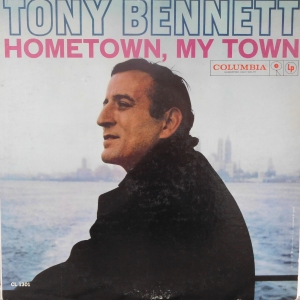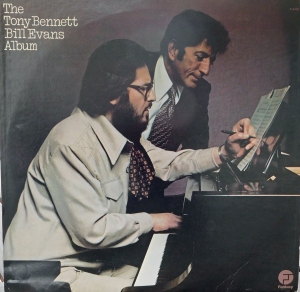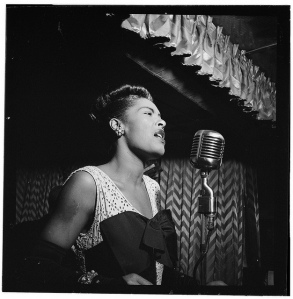
(Public domain, via Wikimedia Commons)
The Project
The beginning of a new movie can be an auspicious event. But for John Huston in July of 1960, it was more auspicious than usual as he was collaborating with America’s most well-known playwright and five world renown actors who had never made a film together. The film in question was to be made in the Nevada desert where the average daily temperature was over 100 degrees Fahrenheit. As a rule, Huston thrived on difficult working conditions and nearly impossible challenges, but the making of this film was more arduous that he anticipated. To his credit, Huston had done nearly everything right. He had chosen to collaborate with a playwright whom he greatly admired. He had chosen actors who perfectly represented their characters. And he had assembled the finest assistants and film specialists for lighting, cinematography, sound and editing he could want. What he didn’t fully appreciate, however, was the precarious mental and physical health of his leading actress, Marilyn Monroe. Nor was he aware of Clark Gable’s health status as well. Both fine actors had just completed exemplary films of which they were proud (Gable at age 59 completed It Happened in Naples with Sophia Loren and showed up on set looking fit and having apparently lost 35 lbs.) Monroe had just wrapped Let’s Make Love with Yves Montand, and rumors were that she might be stealing him away from this wife, Simone Signoret. Some might say that both actors were at the top of their game coming off successful film projects. Did Huston know what he was getting into? He had some awareness of Marilyn’s problems as he had been meeting with Arthur Miller who had told him of their marriage difficulties and Marilyn’s discouragement as being typecast as a sexpot; but Miller had conceived the character of Roslyn to allow his wife to play a real dramatic part, and she was honored to be asked to be in another John Huston film (she had started her career in Huston’s The Asphalt Jungle.) To add to her pleasure at being given this role, she had always felt that John Huston was a director who appreciated her as a talented actress.
The media at the time was also excited about this proposed film. The cast was considered exceptionally good: Montgomery Clift, Marilyn Monroe, Clark Gable, Thelma Ritter, and Eli Wallach. It had major “box office” written all over it. In fact, another thing that John Huston had done right was to hire a writer, James Goode, to write a book about the filming of the movie and a photography team headed up by Cartier-Bresson to oversee official, authorized photos. He felt that in this way ‘the set’ would not be over-run by media. He had put in place the official and sanctioned writers and photographers and no one else was allowed near the filming except by special permission. Huston had apparently selected Montgomery Clift as someone who would be soothing to Marilyn Monroe since she was known for being insecure and temperamental. He felt that Monty would have a calming influence on her, and apparently, he was right. Monty was a good choice. But then, so was Eli Wallach who was also very sweet and considerate. In fact, Thelma Ritter, Eli Wallach, Clift, and Monroe had all attended classes at the Actors’ Studio and knew each other a bit from this experience. So, even though Gable, Monroe and Clift had not made a film together…there was a professional connection between all the actors in this film. Kevin McCarthy, who had a much smaller role, was also a participant in the Actors’ Studio as well, and he and Montgomery Clift had attended at the same time. So, while there may have been warning signs of impending trouble, there were also potential omens of success and camaraderie.
What’s in a Name
Arthur Miller’s title for his story which became the title of the film, The Misfits, is significant. It was originally a short story not a play. Miller told an interviewer that he could not conceive of a play being set in the locale of the West with deserts and mountains. He felt that a short story could do justice to the setting and locale, and he felt that a film would even be better. He envisioned long shots of the desert and the wild horses with the mountains as backdrop. He had been captivated by the scenery when he had been a resident of Reno completing a 30-day stay for his divorce. When he had been taken out to the dessert by cowboys he had met in town, he was entranced by the landscape of black and white – large expanse of white sand with black mountains in the background – he compared it to a “lunar landscape.” He hoped that John Huston and the director of photography would be able to capture what he had seen with his eyes and what he had written about in his story. Both John Huston and Arthur Miller as well as the rest of the cast were interviewed extensively about the significance of the title, The Misfits, and they all had interpretations of it and of the meaning of the movie.
John Huston had the most succinct definition of The Misfits:
It’s about people who weren’t willing to sell themselves out.
“They will sell their work, but they won’t sell their lives, and for that reason they’re misfits.”[i]
Huston defended Reno and the West in general,
He saw it was the last stop for the vanishing American innocent. Miller was saying much the same thing in his screenplay.[ii]
Gable’s character (Gay Langland): a Reno cowboy who has frequent affairs with women in town for divorce actions, and…a man who can’t be bought and who refuses to be tied down.[iii]
Huston told James Goode:
“What’s behind it? It is about people who sell their work but won’t sell themselves. Anybody who holds out – is a misfit. If he loses, he is a failure, and if he is successful, he is rare. The movie is about a world in change. There was meaning in our lives before World War II, but we have lost meaning now. Now the cowboys ride pickup trucks and rodeo rider is an actor of sorts. Once they sold the wild horses for children’s ponies. And now for dog food. The is a dog-eat-horse society.”[iv]
“The part of Gay Langland (Gable) is a point that should be underscored now, not as a preachment. It reveals itself dramatically. He’s the same man but the world has changed. Then he was noble. Now he is ignoble.”[v]
Marilyn Monroe’s character “Roslyn had not had a child because Taber (played by Kevin McCarthy) was spiritually absent. Then she meets Gay. Their feeling for each other will create an atmosphere. I personally admire that kind of guy. Gay Langland is the modern hero or about as close to one as I have read about. Gay has faced the responsibilities of manhood. Perce (Montgomery Clift) too. But there is an element of absurdity in what they’re doing is pointless, if not ugly. Their accomplishment is subjective.”[vi]
Max Youngstein (a vice-president at United Artists) told James Goode:
“I’ve been looking for pictures that are an affirmation of life. There are very few people writing of affirmation. The totality of this picture is that people can make their lives worthwhile. These people are seriously lost in the beginning. The little scene we saw in the rushes this morning is what the picture is about, when Eli says, ‘You have a gift for life, Roslyn.’ The public is a little fed up with downhill pictures.”[vii]
Clark Gable told James Goode his thoughts on the script:
He had been reading (the script) in its entirely every night, saying that it was exciting, that there was so little to say, but that everything said was of importance, there was not a wasted word…[viii]
Eli Wallach told James Goode:
“I have a great trust in John because I think he understands almost in Hemingway’s terms that man can take his licks without whimpering. He keeps me from being self-pitying, self-indulgent, or weak.”[ix]
Guido, the character played by Eli Wallach, and Perce, the cowboy played by Montgomery Clift, were explained to James Goode by John Huston:
“Guido is probably the most complex character in this film, a bit of a hypocrite. He changes tune. None of the others would. He’d become an animal lover if he could have the girl. He has made his compromise. Perce on the other hand is very simple. What he does makes no damn sense but thank God for them. They’re awful good men. Pity is that they’re inverted. You’ve got to be singularly blessed to be part of anything and keep your self-respect.”[x]
Melodrama or Tragedy
One of the paradoxes of The Misfits has been since its release, is that it has never been well received or liked either by the public or the critics. For a film that had such high expectations and was heralded as “affirmative” why has it been so universally ignored or disliked? One explanation for this rejection of the film is that fans of Monroe and Gable were saddened by their deaths following its release, and at least one Hollywood gossip writer sought to blame the film for Gable’s death. Gable participated in several apparently stressful stunts such as roping horses and in one instance being dragged by a horse (it was in fact a rope tied to a truck and he was wearing a protective suit.) Monroe had started another movie soon after the finish of The Misfits, but that project was never completed, and The Misfits remains her last film. Many people who don’t like the film have stated that the film is depressing or sad or both. In this case, the criticism seems to be a rejection of the film because the subject is unpleasant. Given the fact that Marilyn Monroe had a string of successful musical comedies, it is possible that her fans did not want to see a movie that is so melancholy. This brings us to the question Is the Misfits a botched drama that was aiming for affirmation but instead delivered sadness? Both the author and the director were aware of the risks involved in presenting a film that lays bare raw emotions and a sense of paradise lost. For this reason, Arthur Miller and John Huston spent hours each day evaluating the progress of the story and changing the dialogue where they deemed necessary. They were filming and rewriting the story in real time to achieve an outcome that was satisfactory to both. Some may argue that this type of collaboration may have resulted in the film being overly managed to the point of being botched. However, neither the writer nor the director ever expressed dissatisfaction over this process, and in fact they both have gone on the record to praise their collaboration. In much the same way, both Clark Gable and Marilyn Monroe told interviewers that they felt that their acting in this movie is perhaps their best work. So, if the film was not botched in the process of making it, and if the film in no way was a personal failure by the leading actor and actress, then is there another explanation for the film’s mixed fan appeal and critical reception? Perhaps there is. And that is what we are about to examine.
Analysis of a Film
Arthur Miller was not only America’s premier playwright in 1960 he was also a creator pf tragedies. The Crucible, Death of a Salesman are tragedies. Aristotle wrote that a tragedy elicits “pity and fear.” Human failure and defeat are often the substance of modern tragedy. The audience is presented difficult, sad and unpleasant circumstances which start out bad and proceed to get worse. Oftentimes it is a matter of decisions made by the protagonist which inevitably contribute to his or her destruction. Willfulness or unbridled conceit (Greek: hubris) has contributed to the downfall of many heroes in Greek tragedy as well as in Shakespeare’s plays. After the rise of the industrial age authors such as Thomas Hardy, and later Henry James and Edith Wharton began to elucidate the sense of fate and corrupt forces being too strong for a single individual to conquer. By the twentieth century writers were also suggesting that situations can simply be “absurd” and that human activity can be seen as meaningless. Although much of twentieth century literature can suggest nihilism – the works of Arthur Miller and the films of John Huston do not necessarily reflect these views. Both men demonstrate an approach to literature that demonstrates courage and tenacity in the face of adversity. Nevertheless, of the two, Huston’s work tends more towards humor and optimism whereas Miller has embraced a stronger pull towards pessimism as in his play The Crucible. There appears to be a dialectic process in The Misfits in which Arthur Miller’s essentially tragic story was reimagined by director Huston as a humanistic comedy. The two authors had daily discussions about the direction of the storyline with Huston arguing for a happier resolution. It appears from James Goode’s book that Huston’s perspective eventually won over Arthur Miller, and the two men decided that the relationship between Monroe’s character and Gable’s cowboy would achieve a romantic resolution. However, audiences may have been quite perplexed by this outcome since the characters of Rosalyn and Gay fought frequently with each other. In actuality, once the film makers embarked on a path of romantic resolution the director and the scriptwriter discussed the possibilities of Rosalyn engaging with either Perce or Guido. Montgomery Cliff as Perce was always emotionally closer to Rosalyn in spirit and values than either Gay (Gable) or Guido (Wallach). However, it is Gable’s character who appears to be the lynchpin to the resolution of the story. Guido is an opportunist who will do whatever it takes to win but he lacks sincerity. Perce is kind and sensitive, so he does not require any change in his personality. The romantic liaison of Rosalyn and Gay Langland ensures that the film achieves catharsis. Monroe’s sensitive character wins over the “crusty cowboy” who voices pessimism and violence in dealing with life’s frustrations. As he “softens” and relinquishes some of his hate and anger the film offers the audience a solution to the problems the movie has presented up to now of living in a callus and harsh “dog eat dog” world. If he can see a better way to live his life, then maybe 1960 audiences could as well. Was this too easy? It doesn’t seem to fit with the style and voice of Arthur Miller, the playwright. Did audiences reject such a simplistic outlook? Could anyone blame them? The U.S. was immersed in a nuclear “cold war” with the USSR, civil rights in the country was in an abysmal state, and in just 3 years the American president would be assassinated, and a terrible new war in southeast Asia would unfurl. Perhaps, Aristotle was right. Tragedy should not end in optimism. That isn’t the point of tragedy. Tragedy forces us to see unpleasant truths about ourselves and the society we have created. Good drama has to have its own logic and not travel a path of fluctuating impulses.
[i] Lawrence Grobel, The Hustons: Scribners 1989, p.486
[ii] James Goode, The Making of The Misfits: Limelight Editions, New York, 1986, p.32
[iii] Goode, p.38
[iv] Goode, p.44-45
[v] Goode, p.45
[vi] Goode, p.45
[vii] Goode, pp.98-99
[viii] Goode, p.47
[ix] Goode, p.69
[x] Goode, p.46
![Portrait of Nat King Cole, New York, N.Y., ca. June 1947. William P. Gottlieb, photo [Public domain], via Wikimedia Commons](https://music6cafe.files.wordpress.com/2016/10/4843738572_59dc931b24_z.jpg?w=300)


![William P. Gottlieb [Public domain], via Wikimedia Commons](https://music6cafe.files.wordpress.com/2016/07/52nd_street_new_york_by_gottlieb_1948-1.jpg?w=300)
![Maxine Sullivan, Village Vanguard 1947. William P. Gottlieb [Public domain], via Wikimedia Commons.](https://music6cafe.files.wordpress.com/2016/07/4843145591_d3d8a88c44.jpg?w=300)
![Frank Sinatra. William P. Gottlieb [Public domain], via Wikimedia Commons](https://music6cafe.files.wordpress.com/2016/08/4843758568_85cb4e6c3e_z.jpg?w=293)

![[Portrait of Ella Fitzgerald, New York, N.Y., ca. Nov. 1946] William P. Gottlieb [Public domain], via Wikimedia Commons](https://music6cafe.files.wordpress.com/2016/08/4843742660_02e0cc5189_z.jpg?w=289)






You must be logged in to post a comment.